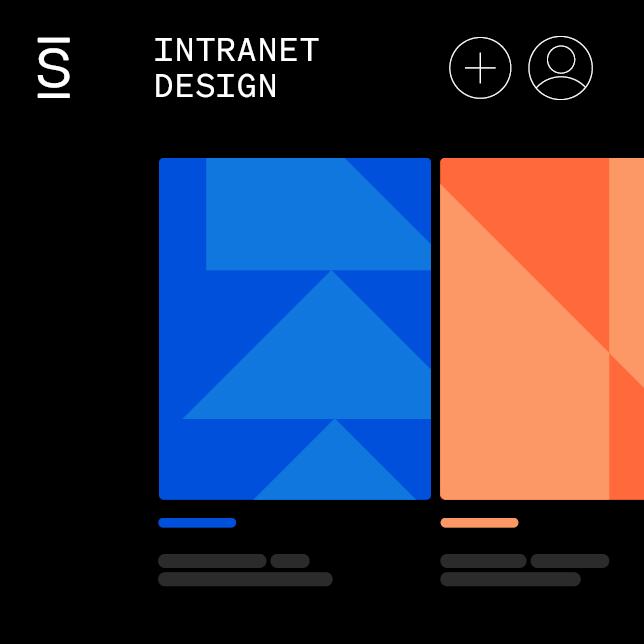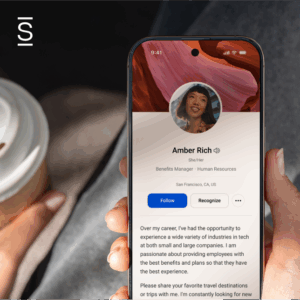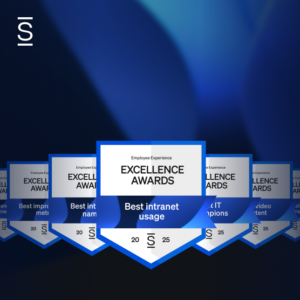As we find ourselves in today’s dynamic and constantly evolving digital work landscape, we must go beyond conventional surveys to accurately capture employee sentiment. Companies relying on outdated methods are left clueless and struggle to address problems that are unclear. This makes them hard to address and nearly impossible to resolve.
But with Employee Listening, companies are discovering a powerful solution that goes beyond questionnaires. It’s not a replacement of surveys, which are still incredibly valuable, but a way to complement and validate that insight.
Why is employee listening important?
In today’s competitive business landscape, organizations gain a competitive advantage by understanding the value of their employees’ voices. And this is where an employee listening strategy comes into play.
By actively listening and acting upon these insights, organizations can better align their practices and initiatives with the needs of their workforce, improving the employee experience. Ultimately, this not only fosters a more engaged and satisfied workforce but also propels the organization toward achieving its purpose and goals.
There are some common challenges facing businesses today, and two recurring themes are hiring and talent retention. The struggle is that companies aren’t just looking for people but the right people with certain skills and talent. And then there’s hybrid work to contend with. While many of us have been working in a hybrid environment for a while now, it’s an ongoing adjustment for many businesses. Things are still changing, and change is hard.
Simpplr’s Employee Listening offering is integrated with our intranet platform. It unearths hidden sentiments and attitudes, helping you see a clearer picture of your people. And when you have the contextual data you need, you can make decisions more confidently, quicker, and more efficiently, addressing what your employees care about most.
Employee Listening provides in-the-moment feedback, as algorithms are continuously listening and learning in real-time, so it can pick up changes as events occur. For example, if you shared your Q3 performance with the company, you’d be able to find out a lot more than just “likes.”
This gives your company valuable insight and helps employees feel heard, which is critical to the employee experience. Research by The Workforce Institute shares that 74% of employees are more effective at their job when they feel heard, and highly engaged employees are three times more likely to be heard at work (92%) than highly disengaged employees (just 30%).
So, how does employee listening look? Companies can employ various listening methods, but they typically fall into two categories—active and passive listening, and Employee Listening captures both.
Simpplr Employee Listening: Active and passive listening
Employee Listening goes beyond regular employee engagement surveys and annual surveys. here are inherent challenges with traditional surveys, including survey fatigue and employee feedback bias due to lack of anonymity.
Simpplr recognizes these challenges and seeks both employee feedback surveys (prompted) and continuous, passive listening. Active employee listening is analyzing intel employees give to you. It’s either volunteered insight or specifically requested via prompts, such as:
- Pulse and engagement surveys
- All-purpose surveys that gather feedback on specific topics, such as recent training sessions or events.
- Micro-surveys, which are shorter and focus on specific tasks, might include:
- Sentiment checks: After making an announcement, the survey asks each employee how they feel about it. The collected sentiments are then displayed on a simple dashboard.
- Awareness checks: involve attaching a micro-quiz to a page, like a policy document, to assess comprehension. Administrators can track analytics and assess employees’ understanding
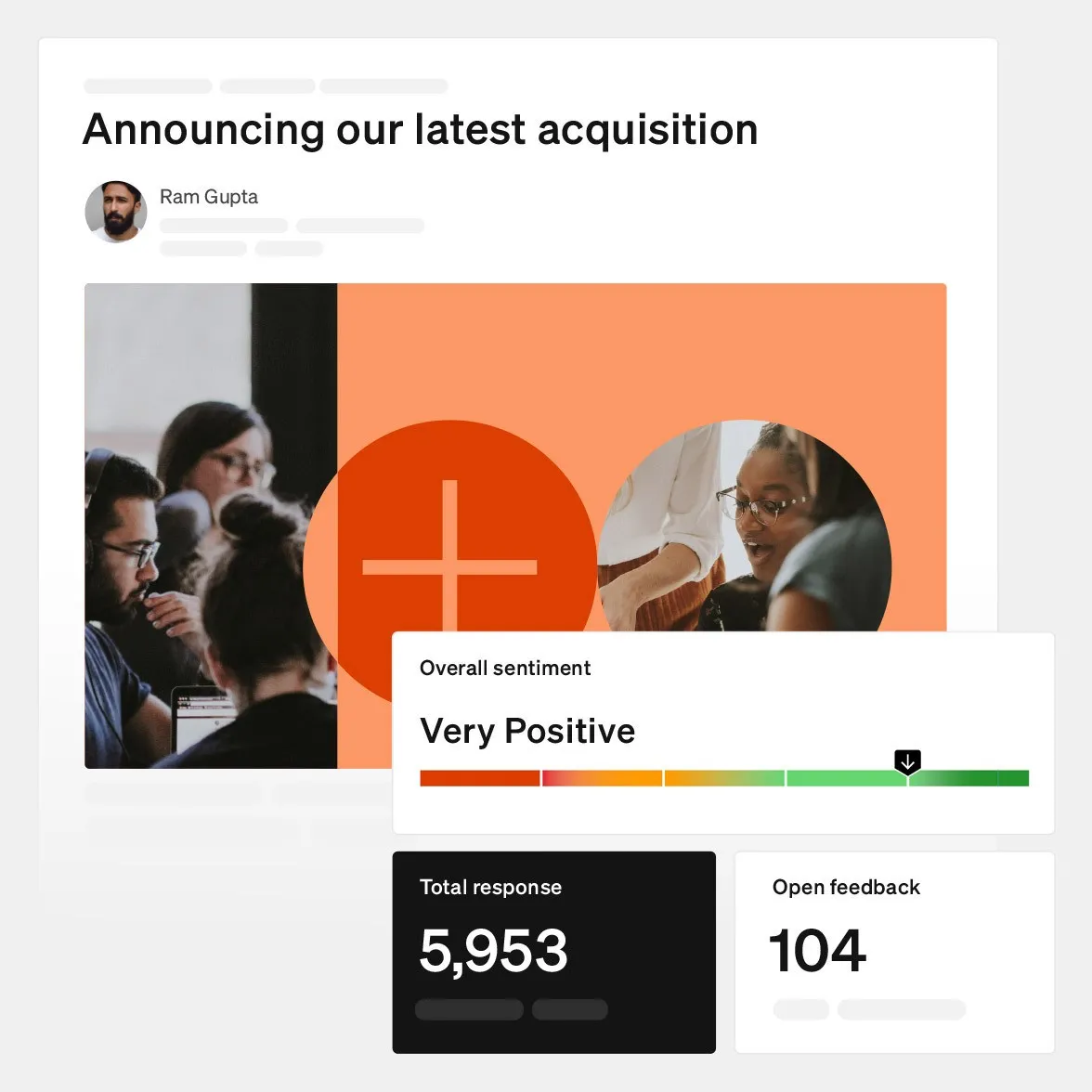
For a more accurate and comprehensive understanding of employee sentiment, Simpplr’s Employee Listening strategy includes passive listening. Passive listening captures insight continuously across the platform with the help of AI. It analyzes comments, context, tones, and attitudes and surfaces those employee experience insights in what we call a Perception Dashboard.
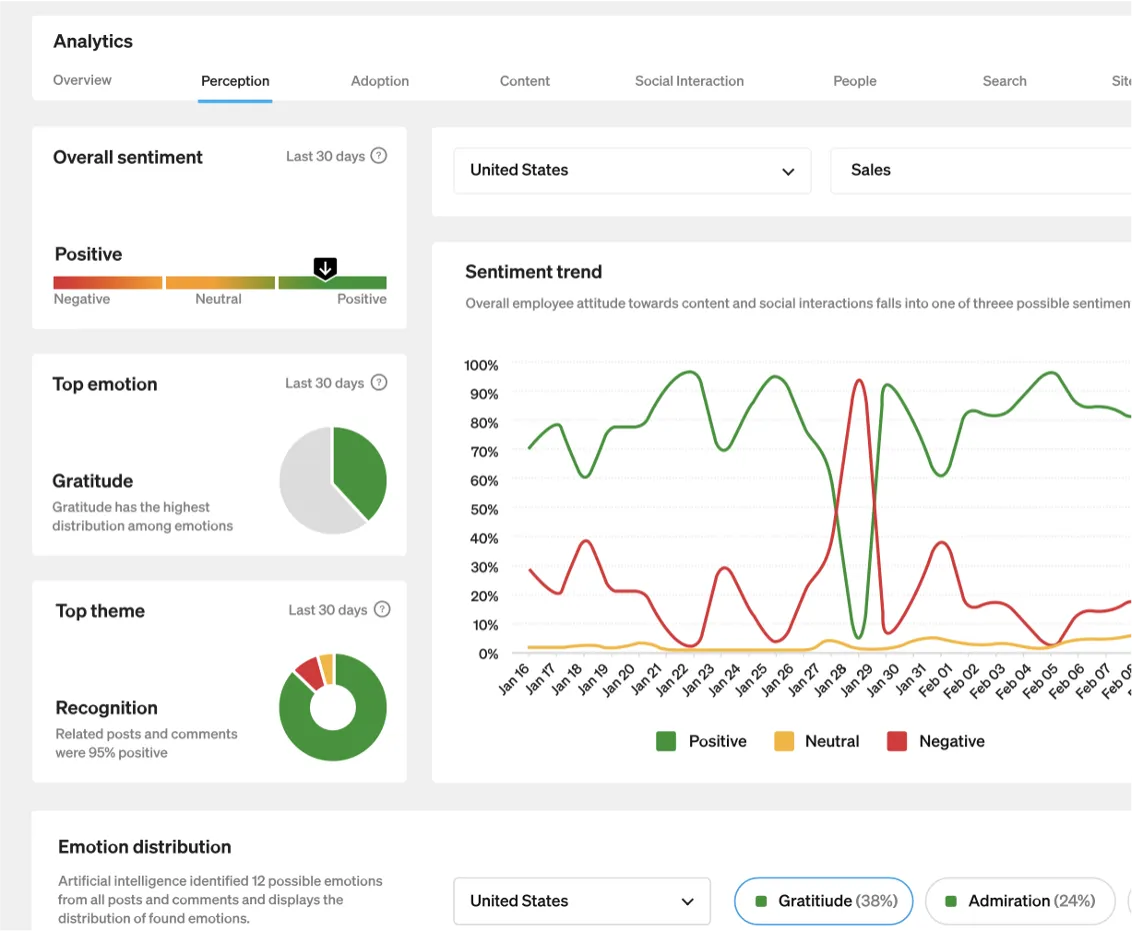
Simpplr’s Perception Dashboard combines sentiment and emotional insights. It’s where you’ll find the sentiment bubbling beneath the surface and emerging trends and themes that can impact internal benchmarks. It informs the bigger picture of what’s actually happening in your organization by way of anonymous, and powerful, feedback.
It helps create a holistic view of what’s happening within the organization beyond simple responses like, “It’s fine.” It passively listens across the platform, continuously learning and analyzing sentiment and surfacing hidden attitudes. This helps you remove the guesswork and make decisions that influence the employee experience more proactively.
Make employee listening a company-wide priority
It is crucial to emphasize the value of listening to your employees and to promote its value company-wide. When you prioritize listening, you create an environment that fosters unity and cohesion, and an environment where everyone can flourish
Listening to your employees to understand their needs, concerns, and ideas is the best way to make meaningful, positive changes that improve the employee experience.
You can read more about Simpplr’s Employee Listening solution here. To learn how Coupa is building a better employee experience with Employee Listening, watch the webinar here. Contact us for a demo if you’re interested in Employee Listening and how it can improve the employee experience.










